In this issue
Features
Yes, ecovillages can be hi-tech
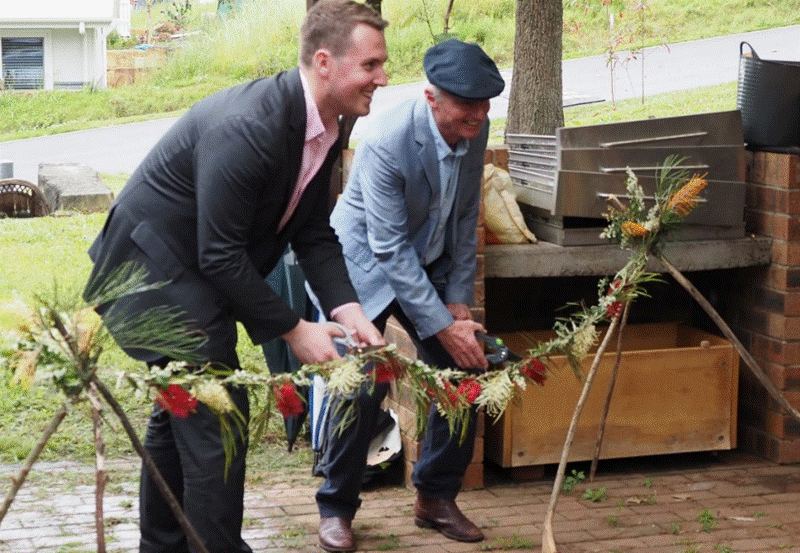
Federal MP Gordon Reid and NEV Power member Dave Parris cut the “ribbon” to celebrate the battery launch
-Chris Wenban and others
With the official launch of the Narara Ecovillage Community Battery and ongoing development of a Smartgrid, NEV’s energy company ensures the village is “a world-leading carbon-neutral sustainable living centre that integrates and maximises renewable energy use and new energy storage technologies”.
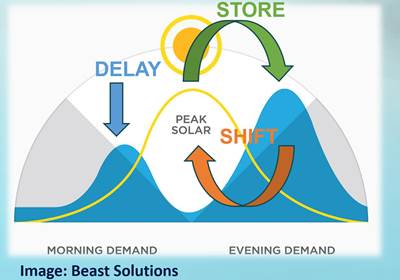
Community Battery
Last month, the village held the official launch of our community battery and the achievement of building the smart electricity grid to date, and celebrated the support from our local members Dr Gordon Reid and Liesel Tesch, Central Coast Council and ARENA who provided the grant that made it all possible. Guests also included Toby Roxburgh (Carbon Neutral Delivery Partners) who helped design the system.
One aim of the village is to be self sufficient for our energy needs, and this requires innovative high-tech solutions.
The village building standards require every home to have solar PV sufficient to its own needs, but this alone is not enough. Energy demands rarely match energy supply. Power generation is highest during the day, but peak demands for energy are generally early in the morning and late afternoon and evening. The 460kWh community battery system allows the village to store power during the day in order to meet the needs of residents at these times. The village is also able to export surplus power generated from its existing PV arrays.
Smartgrid
So in addition to a community battery, NEV Power is developing a Smartgrid. This innovative technology provides the tools to manage this balancing of power loads across the day by:
- Using historic grid performance and anticipated next day weather patterns to predict future power production and demand.
- Coordinating the use of power for infrastructure management within the village (such as water pumping water to the header tanks) to take advantage of excess power.
- Encouraging residents to give NEV Power the capacity to remotely switch on or off certain nominated powered devices such as air conditioners and hot water systems within their own homes, allowing NEV Power to better balance the energy load across the entire network.
- Providing residents with real-time online visibility of their energy consumption. This visibility, combined with time of use tariff charges, will encourage residents to use power responsibly and sustainably.
To do this required a specific type of two-way battery that was imported from Europe, as there was nothing of the kind in Australia at that time.
The Ecovillage received financial support through the Australian Renewable Energy Agency (ARENA), and in return the village shares its knowledge with other community-based organisations. For example, this report from 2020 Lessons learned (2020) pdf.
NEV Power continues its research as (in the words of ARENA) “a world-leading carbon-neutral sustainable living centre that integrates and maximises renewable energy use and new energy storage technologies”.

Ecoliving Podcast #3: Community Batteries, Smartgrids, and Microgrids
- (about 20 mins)
- ADAM WEISS OCTOBER 25, 2022 PODCAST
We just celebrated the official launch of our Narara Ecovillage community battery and microgrid, and Toby Roxburgh came up from Canberra to launch the system, which he helped design. Toby is the founder and executive director of Carbon Neutral Delivery Partners, and he joined Adam to talk about the differences between smartgrids and microgrids, and the benefits of batteries for …Read More
Swift Parrot habitat restoration
-Daniel Keating
Community organisations joined forces for the first of three Save the Swift Parrot workshops held at Narara Ecovillage earlier this month. The workshop introduced participants to the Swift Parrot, and provided a hands-on opportunity to learn about bush regeneration and revegetation techniques appropriate to the riparian corridor along Narara Creek, as well as methods for identifying and removing weed species such as Privet.
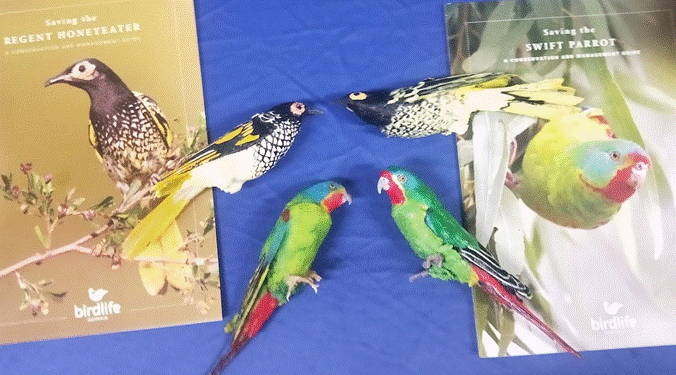
On Saturday October 29, 24 enthusiastic community members along with members of the Narara Ecovillage Conservation of Flora and Fauna Working Group, staff from the Community Environment Network and Greater Sydney Local Land Services participated in the first of three workshops aimed at restoring habitat for the endangered Swift Parrot.
The workshop was a hands-on opportunity for participants to learn about bush regeneration and revegetation techniques and took place along the riparian corridor adjacent to Narara Creek at the Ecovillage.
The riparian land at Narara Ecovillage has undergone significant change since European Settlement. What was once a floodplain rich in rainforest and swamp forest is now cleared and dominated by exotic groundcover species. The creek-side vegetation has many invasive trees and shrubs such as camphor laurel and privet although numerous local native rainforest species such as coachwood and red ash are also found.
Despite the weeds, the riparian corridor retains many important environmental values.
The Conservation of Flora and Fauna Working Grouphas been working to protect and enhance these with great success. Swift parrots have been observed in nearby bushland and the site is suitable for the planting of Swamp Mahoganies, a key foraging resource for this endangered species. These factors along with funding from Greater Sydney Local Land Services represent the key elements of an exciting project.
Swift Parrot (Lathamus discolor) is a Critically Endangered migratory species that breeds in Tasmania during the warmer months, then flies across Bass Strait to winter on the mainland, particularly in central and eastern Victoria and along the east coast of NSW. Visit HERE for more details about this special bird.
At the workshop, participants planted a range of native tree and shrub species including Swamp
Mahoganys. Plants were protected from swamp wallabies with tree guards, and weed mats were used to suppress weed regrowth. Participants were also shown how to tackle the most problematic weeds such as privet using several control techniques.
The day was a great success! A large area at the site was weeded and 90 native plants were planted with much care and attention. It was also a great opportunity to share knowledge and meet new people. Another two workshops are planned for the site for March and May 2023.
We’d love to invite all those who attended in October back to continue their great work and welcome anyone else who may be interested to come along too!

Daniel Keating is Senior Land Services Officer, Greater Sydney Local Land Services
Narara Ecovillage after ten years

-Verena MacLean
Ten years after forming the Narara Ecovillage Cooperative, our hope is that we can showcase to the rest of the world that each one of us can make a difference. This little peri-urban village is leading the way in terms of forming community, stepping into – and sharing – innovation, building sustainable homes and ensuring the children thrive.
Read more:
I recently had the privilege of taking two months off and travelling in Singapore, UK and South Africa, combining business and family and this allowed fresh eyes and a new view of Narara Ecovillage on my return home.
We are doing a good thing here.
The countries I visited, indeed most of the planet, are very aware of climate change, the stresses of natural limits of resources, the confusing nature of leadership and the challenges of globalisation; the all-important response to this varies from denial, avoidance, depression, acceptance, and action.
So, when I am enveloped in the little peri-urban village which is leading the way in terms of forming community, reducing, reusing and recycling, stepping into innovation with energy production and community batteries, ensuring that their homes are both sustainable and (dare I say) stylish, food growing and ensuring the children thrive, I can’t help but be more than proud of all of us.
Ten years is also a good time to think about the next ten years. Stage 2 is well underway, the roads being built, and plans being made for when construction of homes can begin, dreams manifest and the environment will be restored. We will double in size in terms of people numbers, shift from being a developer to living and growing in a village and making sure that the threads that bind us are strong.
Did I mention that we are financially viable? The Achilles heel of most ecovillages has been front of mind and we can happily say that finances are managed tightly and are robust.
My hope is that as we do so, we can showcase to the rest of the world, starting with our immediate neighbours and shire, that each one of us can make a difference. Our response can shape and form a better world for our children and children’s children. So you are welcome, in whatever way makes sense in your world, to participate, join, learn and have some fun along the way.
We welcome visitors and look forward to seeing you in the extraordinary place that is Narara Ecovillage.
- Verena MacLean is Chair of the Ecovillage Board
Clay floor recipe from Bamboo House

-Linda Scott
Linda Scott’s iconic natural build house is one step closer to completion following an earth floor workshop led by builder Michael Lancaster last weekend.
Earth floors have been created from natural found materials for thousands of years; a difference in modern times is oiling the floor to create a strong, dust-free finish that’s comfortable to walk on and stunning to look at!
There are many recipes for earth floors. On this occasion, we mixed:
- 1 unit by volume of white powder clay or natural clay
- 2 units of yellow brickies sand
- 1 unit coarse river sand (for base coat) or 1 unit washed beach sand (for the finer top coat)
- Add a couple of handfuls of chopped straw to prevent the floor cracking, and finally
- spray water into the mixer to make a consistency like damp bread crumbs that will hold together when squashed in a fist
- If you’d like more details of the process, you are welcome to email me for a fact sheet or attend a working bee to finish the floor.
Achieving a smooth, level floor does take effort and some elbow grease.
Once the earth floors are cured and oiled, the recycled kitchen can be installed and the house will begin to look like a home.
If you’re interested in helping with this last stage, please email Owner Builder, Linda, on ecovillageliving@gmail.com who would appreciate your help.
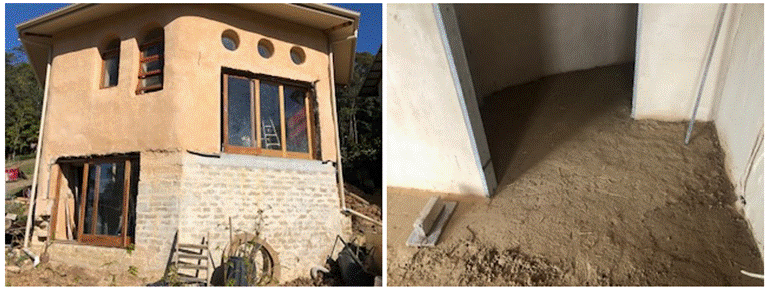
Oh, the joy of purpose!
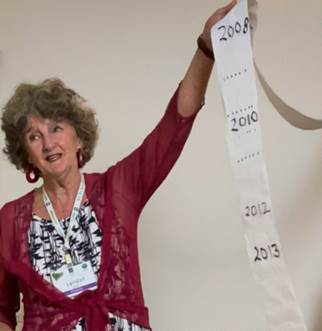
-Lyndall Parris
Lyndall Parris offers five ways to connect to your purpose and move towards your goals.
Earlier this month, I ran a workshop ‘The Joy of Purpose: inspiration, stories and tips for connecting to yours’.
Here are a few thoughts, based on my journey founding the ecovillage:
- Clean up your life: work on improving your health, and declutter
- If you don’t know what ‘lights you up’, identify what ‘weighs you down’ and plan your departure from this
- You can work on your goals, dreams and purpose after-hours. This work is sacred and energising
- Quit practices that ‘practice distraction’ and instead ‘build the muscle of focus’
- Purposeful objectives are more sustainable when there is the alignment of something in it for you personally, something for the community and something for the world (no matter how small)
Further information: Lyndall@nararaecovillage.com
Events
Sat Nov 26 workshop: Creating sustainable neighbourhoods

Learn how to set up cohousing and ecovillages in this workshop and networking opportunity on the final weekend of Earthsong Eco-Neighbourhood co-founder Robin Allison’s Australian book tour.
- When: Saturday 26th November, 9.30-4.30pm
- Where: Narara Ecovillage Village Hall
- Cost: up to $75 – some sponsored places available, contact us
- Bookings essential
Robin Allison, co-founder of Earthsong Eco Neighbourhood has been giving talks at cohousing and ecovillages on her Australian book tour. The QLD & NSW talks culminate in this workshop and a networking opportunity to mix with others who are currently creating a vision, and sorting out finance as well as social agreements while designing sustainable homes.
Her NSW talks are in Sydney, Northern Beaches, Newcastle and Narara from 22 – 27th November. More details here
Jason Hilder co-organised the Maleny event & noted “Perhaps the key takeaway of her talk was the vital importance of the group vision BEFORE the many steps of developing a cohousing community began. Whilst I have both heard and read about this previously, Robin’s presentation really strengthened this point” After Robin’s talk I gave a presentation on three possible sites for a 12-25 home/25-50 person cohousing development within walking distance of Maleny town centre. This brought up discussion and sparked interest in being involved or supporting the steps to make it happen.”
Sun Nov 27: Ecovillage Open Day
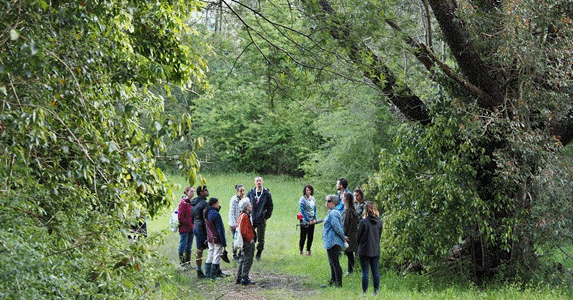
Our Open Days are a chance to visit the village and see how Narara Co-op members are collaboratively working towards their Vision Mission & Aim. November 27th is the last for 2022 and what a lot of change the Stage 2 site has seen in the capable hands of our civil works tractors, Robson.
Come to see and hear our evolving story.
- When: Sunday 27th November, 10.30-12.45
- Where: Narara Ecovillage Hall
- Cost: $15; free for current NELN Members
- Bookings/more info
Sun Nov 27 Free Talk: Robin Allison, Author of CoHousing for Life
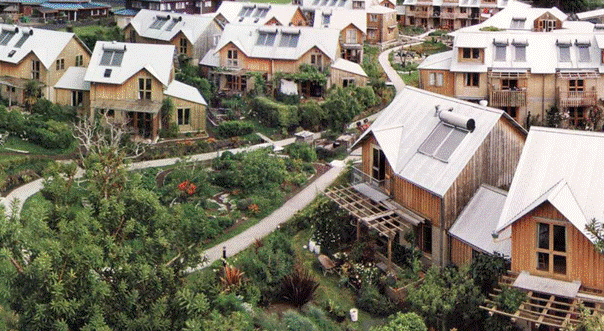
Robin has been through the challenges and delights of establishing an eco-neighbourhood in New Zealand. Her talk gives an outline of their journey and she will undoubtedly share some of the experiences of other groups that she’s presented to in QLD and NSW.
- When: Sunday 27th November, 2-3.30pm
- Where: Narara Ecovillage Hall
- Cost: FREE
- Bookings: No bookings required but you might like to purchase a book
Opportunities to live in the village
Home Lots available in Narara Ecovillage
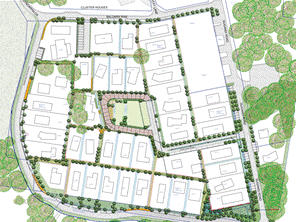
-Lyndall Parris
Several lots remain in Stage 2, each with excellent solar aspect, outlook and other amenities. More information here:
Note from Lyndall Parris: Now that I have lived in this amazing place for nearly three years, it would be my pleasure to chat with you on any aspects of living at Narara Ecovillage, either by phone (0419 279 711) or better still over a coffee at our Coffee Cart, which is open Tuesday to Saturdays from 9am. My email address is Lyndall@nararaecovillage.com
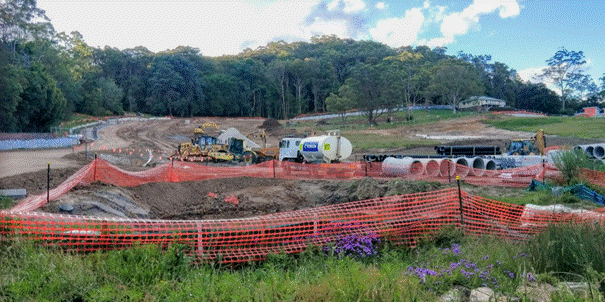
Stage 2, located near the entrance to Narara Ecovillage has about six lots now for sale.
Each lot has a lovely north-easterly outlook and we can thank the NSW government for choosing the right side of the valley to settle their horticultural institute a century ago. All homes can have good solar access for natural winter warmth and summer cool, and there are no inferior lots, so that all purchasers are ‘winners’. Our nearness to Sydney with a rail link getting faster, local beaches, Strickland forest, shops, hospital, schools, are all features that mean a lot to me and my fellow Nararians – that lovely feeling of peace and tranquility at home but nearness to amenities when we venture out.
The infrastructure is due to be completed in March ‘23, with people able to settle their lots possibly in the middle of the year, and thereafter start the process of building their new homes.
Now that I have lived in this amazing place for nearly three years, it would be my pleasure to chat with you on any aspects of living at Narara Ecovillage, either by phone (0419 279 711) or better still over a coffee at our Coffee Cart, which is open Tuesday to Saturdays from 9am. My email address is Lyndall@nararaecovillage.com
Please have a good look at our website and especially the FAQ section. You might also like to contact our admin assistant Jazz: info@nararaecovillage.com – she is a mine of information, or visit us from 10.30am on Sunday 27 November for our final 2022 Open Day talk and tour.
Registrations are through our website: www.nararaecovillage.com
Rental opportunity in the village
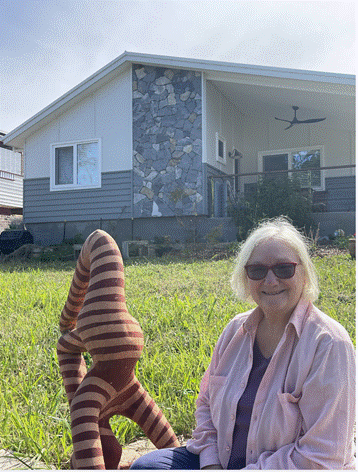
Try before you buy? Explore if community & small footprint living is for you.
Enjoy living in the heart of the village, sharing a well appointed sustainable house with Gillian. Room for rent at $250 a week inclusive. Contact gillianwelstead@gmail.com
Village News
One visitor’s Ecovillage Experience

-Ari
Three days of kindness, community, deep ecology, forest bathing, bush regeneration and sustainable houses.
Arriving – Friday 30th September
Coming up on the train from Central was surprisingly easy. The view of the Hawkesbury River and the sense of adventure made for an enjoyable ride. I was met at the station by Richard, a volunteer and member who thoughtfully answered my first questions about the weekend in our short drive to the village. Richard pointed out Candy’s Earthship and the construction areas for Stage 2 as we drove along to the village hall.
Registration took two minutes. Volunteers helped me figure out what workshops I would be attending over the course of the weekend. A kind soul brought my bag from the car and I was whisked off to meet my host, Scilla. We were delighted to meet each other, and she welcomed me with immense warmth and generosity. She took me up to her village home, showed me around and settled me into my room.

Dinner was in the village hall, with beautiful fairy lights strewn about the room and lovely red and white table cloths. We were served an incredibly delicious, hot organic meal: for the vegans, sweet potato bake with lentils, and for others, a variation on cottage pie, accompanied with stunningly fresh salad with edible flowers. This was followed by coconut and chocolate pudding, a burst of flavour. A decadent feast, and the first of many.
Saturday 1st October
The day began with bird calls of so many species that they created a symphony. Slender, incredibly tall gum trees swayed out the window. Scilla had very kindly provided all the makings of a lovely vegan breakfast. We made coffee and chatted about our own shared realms of interest, related to ecology, sociocracy and intentional communities. It was a joy to be so welcomed into the home of a villager.
Deep ecology was my first workshop of the day, led by extraordinary environmental activist and founder of the Rainforest Information Centre, John Seed. John began the workshop by performing a stunning poem by Drew Dellinger, retracing the origins of life on Earth. Workshop participants sat under an awning watching the wind blow the valley trees’ leaves to and fro, while John invited us all to feel our belonging to the miracle of life. He led us in a meditation on our relationship to trees, particularly on the exchange of oxygen and carbon dioxide. The workshop went on to give participants an opportunity to deepen our sense of connectedness to each other, and to share our own grief at mass ecological destruction. The concluding circle of the workshop involved gratitude for this shared moment and commitments to ongoing work to defend the Earth.

Bush regeneration was one of my afternoon workshops. Eager participants donned gumboots, picked up shovels and secateurs, and learned about how the invasive privet plant is destroying the swift parrot’s native habitat. We then were shown how to use a popper, a fantastically fun tool for uprooting stubborn Privet saplings. We worked away to uproot privet and fireweed, while listening to the creek wind its way down the valley, and chatting, sharing knowledge and stories. Afternoon tea was brought out to the bush where we were working, and we enjoyed cake, fruit and tea while watching the sun pour through gaps in the trees.
Forest bathing was my third workshop of the day. Carly Walker-Smith, medical practitioner and eco-therapist, took a small group on a gentle forest walk, crossing the creek and coming into a beautiful wide field, with incredibly tall, old trees. We were invited to sense our own connection to some part of the natural world, be it a tree in front of us, a bright red leaf on the ground, or the expansiveness of the sky. We then sat together on logs, in a circle by an old campfire, and Carly provided us with drawing materials to express our experience in any way we chose. I drew various abstract shapes and watched as every participant enjoyed this moment of creativity and shared silence in a stunning natural setting.
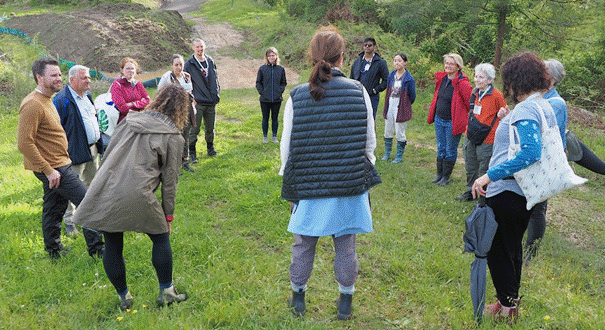
Forestbathers
Sunday 2nd October
Breadmaking was an intimate and joyful workshop, with only six participants, while other visitors enjoyed different workshops. Karl and Annie invited us into their beautiful ‘cluster’ home, where the six of us sat in the kitchen and learned how to make bread from scratch. We each got a turn and kneaded the dough, and ended up making three beautiful focaccias. We also got to learn about making rye bread and ‘no-knead bread’, and were given some bread recipes at the end. Karl was warm, funny, generous and patient, and interested in hearing participants’ stories of making bread with their own families. The feeling in the room was of connectedness and delight, and the smell of bread baking lifted all of our spirits.
In the afternoon, many participants headed to the ‘triple span’ community garden; rows and rows of beautiful veggies growing organically, tended to by volunteers from both within and outside the village. I got to plant a whole bunch of leek seedlings, and loved feeling the dirt on my fingers. The sense of calm in the garden, with so many people -villagers and visitors alike – working side by side to grow food, was just wonderful, and so rejuvenating. Visitors were split into small groups, with a member giving them guidance and instructions. Working in the garden was deeply satisfying work, and I can’t wait for my next opportunity to get my gardening tools out.
After dinner, dessert was served in the Members’ Lounge: a lovely, welcoming evening, and a fantastic opportunity to meet and talk to village members about their experiences and their journeys to joining. John Seed sang some powerful folk songs about protecting the Earth, and two children who were visiting with their family played the violin. Children from the village and visitors’ children became good friends during the weekend, running through the village together, playing and laughing.
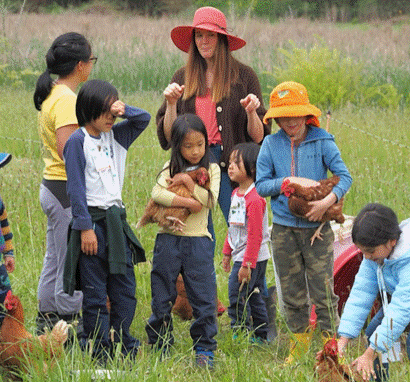
Monday 3rd October
On the last morning of my stay, I got to enjoy a very informative and frankly astonishing tour of the different houses in the village. Houses in the village had been built, or were still in the process of being built, using all kinds of remarkable, sustainable processes and materials. Many aspects of a build were covered in the tour, including details about architecture, engineering, energy usage and conservation, and affordability. Highlights included a sculpted earth house, the Earthship, Bellbird House, and tour guide Geoff’s own, remarkable sustainable family home. If you don’t know yet what an Earthship is, how what looks like a ‘hobbit’ house could possibly be real, or if a sustainable future could be in reach for you…there’s only one way to find out. Come to Narara Ecovillage for their next Open Day, or another similar public event, and I assure you…it will be worth every minute.
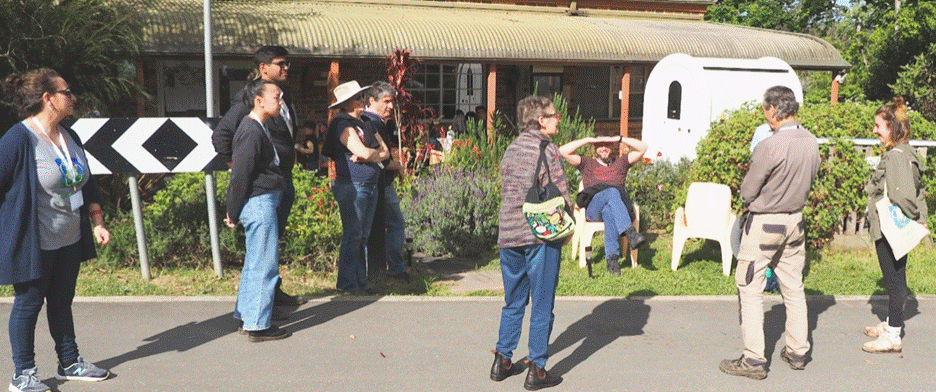
Thank you Narara for such an amazing experience weekend!
Thai engineers check out the village Smartgrid
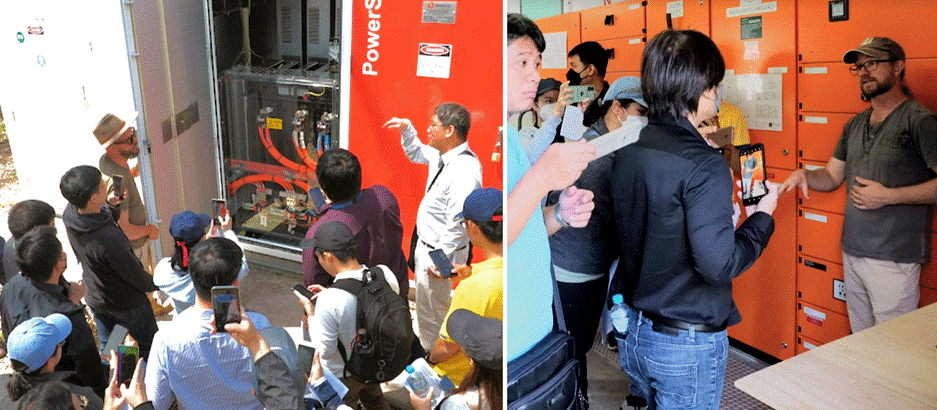
-Lyndall Parris & Chris Wenban
There is such energy and activity at Narara Ecovillage as we spring out of all that has gone before. Final Stage 1 home builds are underway, Stage 2 roads and other infrastructure is in progress, new friends are planning their home builds, and … the sun is shining on our solar-fuelled Smartgrid and community battery!
On Sunday 30 October a group of 30 Engineers from the Electricity Generating Authority of Thailand (EGAT), hosted by Ernst and Young on a tour of Australian sites, visited the Ecovillage to check out our power infrastructure.
Their tour focused on helping the EGAT Battery Energy Storage Team understand the key battery technologies potentially available; identifying the likely key factors influencing the use of batteries to provide storage and system stability services; and developing the capabilities required for the successful long-term implementation of Battery Electricity Storage Systems (BESS) in Thailand.
The engineers appreciated the ability to see this rare community-battery-scale project in the context of the community that it serves.
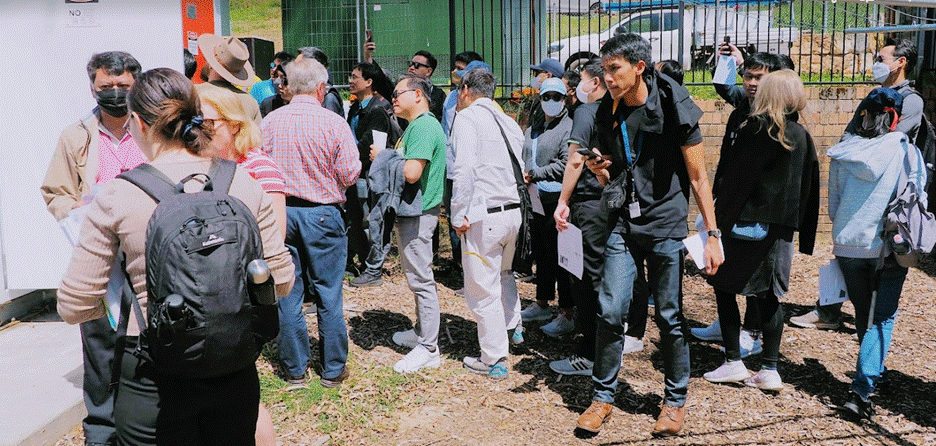
Central Coast Edible Garden Trail

-Tanya Mottl
Visitors and villagers found mutual inspiration when about 200 people dropped in last Saturday for the inaugural Central Coast Edible Garden Trail, organised by the team from Permaculture Central Coast. Open gardens included community gardens, a permaculture food forest, a market garden, and an experimental ‘Farm Bot’, as well as individual gardens at Candy’s, Donna’s, Geoff’s and Lynn’s homes.

Permaculture design is a core tenet of the Ecovillage’s aims. Watch this space and our social media for announcements about 2023 events with a permaculture theme!
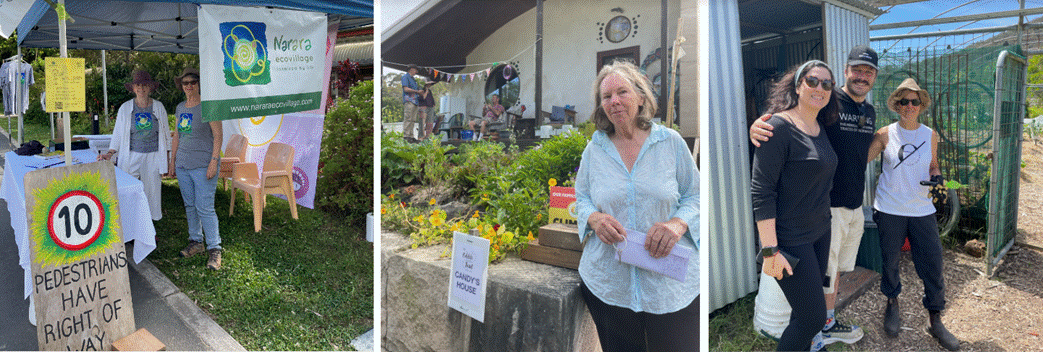
Left to Right: Rosemary & Rafaele from Narara Education & Research have recently founded Environment Action Mentors; Candy in front of her Earthship; Gisella greets environmental educators Paul Mason & wife Marcela at the TripleSpan food area to answer the question “What is Normal?” on Paul’s Instagram account – @sociocerebral
Candy’s Garden
- Earthship with built in greenhouse with productive gardens nestled in, access to garden and greenhouse areas only.
Townhouse Gardens
- A huge variety of potted and raised gardens that evolved organically and artistically – so much to see in these small productive spaces that naturally flow from one to the next
Donna’s Garden
- With lovely chooks and rambling gardens. This garden packs a lot in and is a good lesson in permaculture gardening.
Lynn’s Garden
- Features swales, bunds and wicking beds, established only a year ago this garden is an example of managing water on your landscape and has performed very well despite this year’s excessive rainfall
Geoff’s Garden
- Makes the most of the north aspect. Terraced garden. Lesson in how to use re-purposed materials
Nursery / Farm Bot
- A fully automated machine gardener!
Triplespan Market Garden
- Traditional market garden layout inside the Triplespan structure, provides veggies for the village café
Scribbly Gum Food Forest
- A shared space created and cared for collectively, featuring a large variety of fruit and nut trees with swales on contour and habitat for wildlife
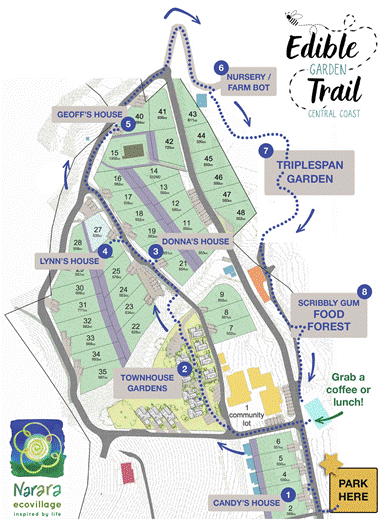
Permaculture Ethics & Principles as described by founder Peter Holmgren
Earth People Fair, a groovy song by Formidable Vegetable … who will be playing in the village in early January!
Wildlife
Roaming Echidnas!
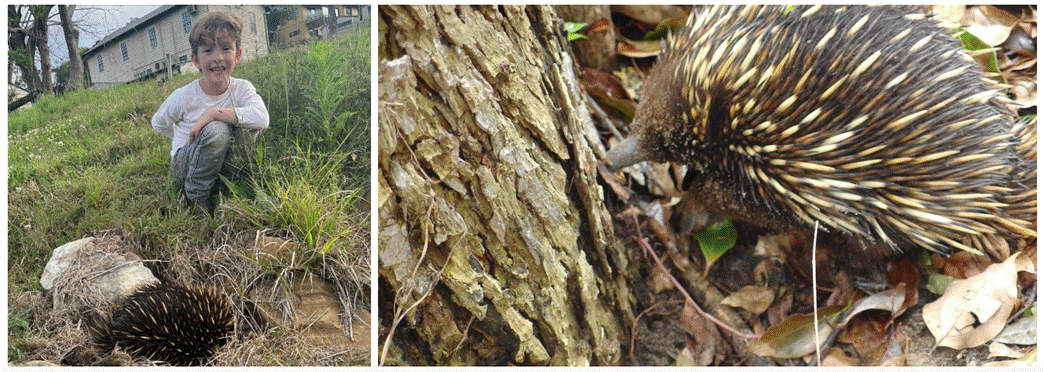
Left to Right: August discovers an Echidna! (photo: Lincoln de Kalb); Echidna Close Up (Photo: Patricia Meagher)
-Lorraine Hawdon
Did you know that a baby Echidna is called a ‘Puggle’? Or that once there were long-beaked as well as short-beaked Echidnas on mainland Australia? These are just some of the more interesting facts about one of our favourite Australian animals.
Echidnas have been seen in our forests, along bush tracks, in open areas and even beside our “main” road! (Admittedly we have a 10km speed limit and there is not much traffic). It is always a thrill for anyone who spots one!
You can read more about Echidna’s on the Australian Museum website or on the Australian Bushland Heritage website. We hope you enjoy the video below, taken by Villagers Patricia Meagher and Andrew Dobson this Spring.
Do a Thing a Day
Why go organic? Find out more about pesticides
If you want a deep dive into the many issues related to pesticides, here’s a great report full of infographics: Pesticide Atlas 2022: Facts and figures about toxic chemicals in agriculture
We should buy organic food for the environment and the health of the farmers as well as for our own health!
Contact the Network News Editors network.news@neln.org.au
About the Network and the Village

The Network
The Narara Eco Living Network is a not-for-profit educational and outreach body established by members of Narara Ecovillage to foster more sustainable living in all its forms and promote the vision of the village.
We publish the Network News and run networking & educational events and community projects.
Become a supporter of the Network – 12 months membership is only $20 an individual or $40 a family. Networkers are offered discounts to a variety of events at the village, and free entrance to Open Days. Click here to check out upcoming events at the village. The network is 100% run by volunteers so we really appreciate your support!

The Ecovillage
Narara Ecovillage is a community that blends the principles of ecological & social sustainability, good health, business, and caring. We are located on the NSW Central Coast at 33 Gugandi Road, Narara 2250. Click here for more info about Narara Ecovillage

